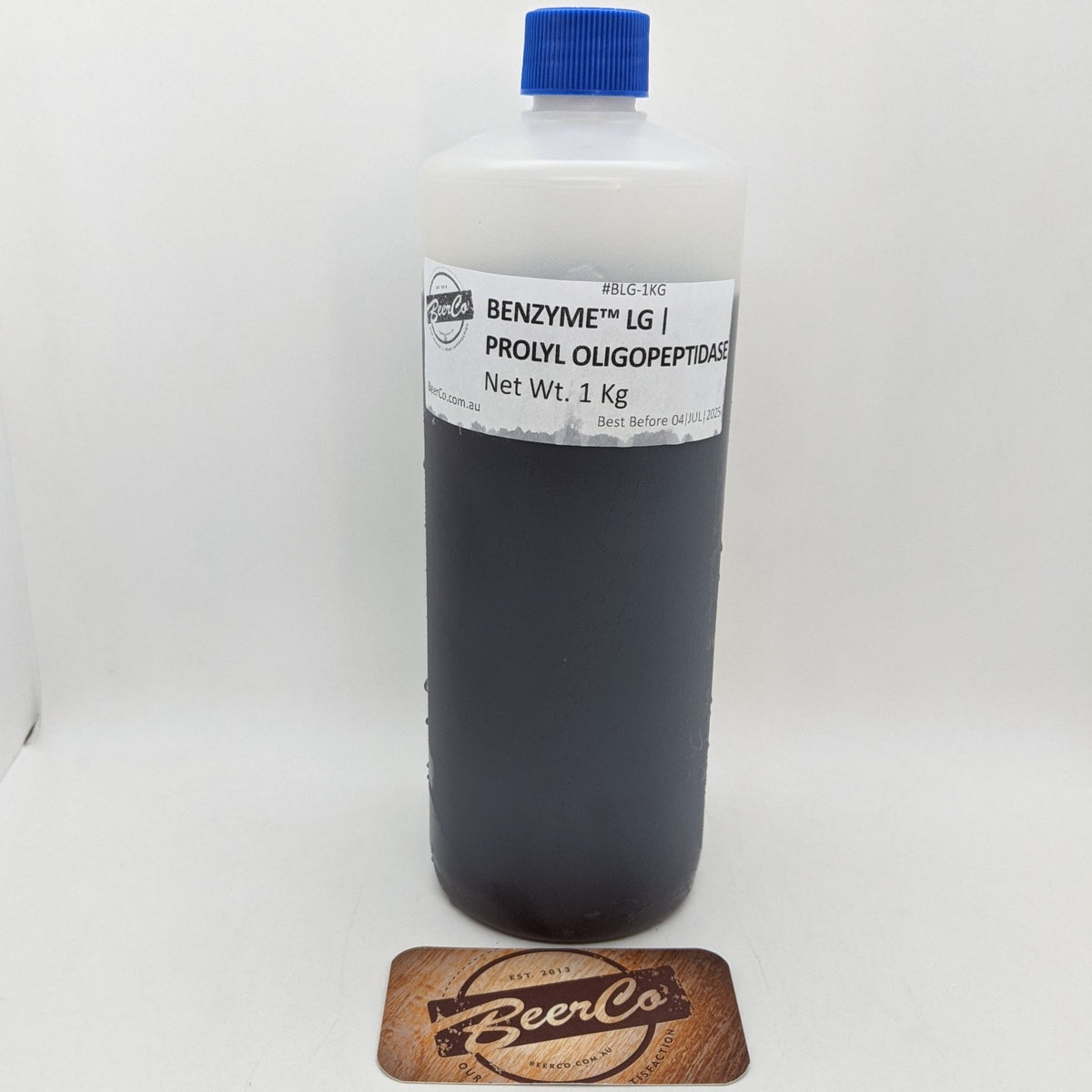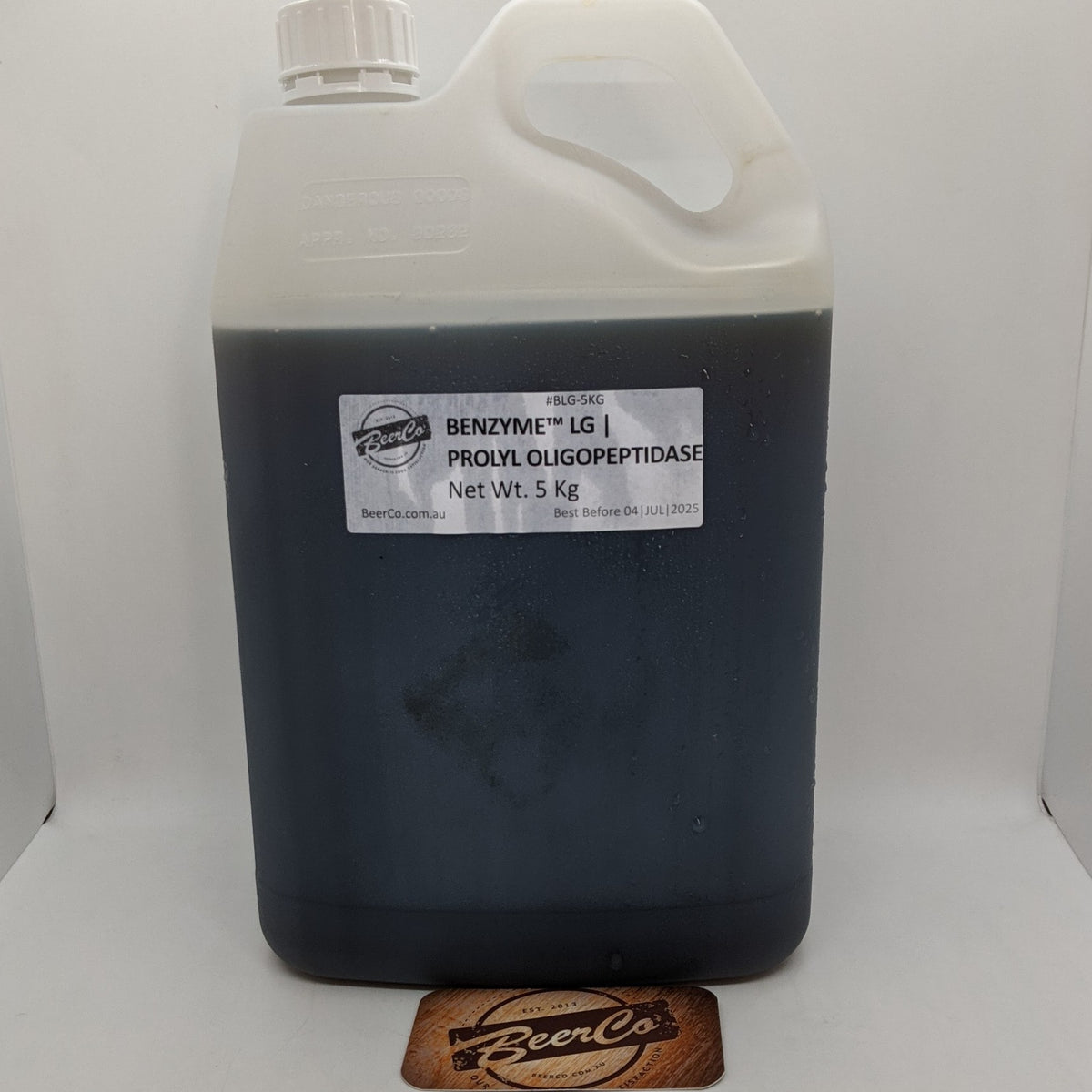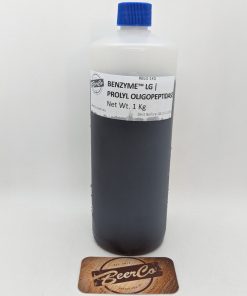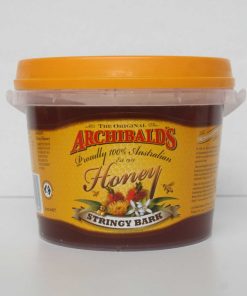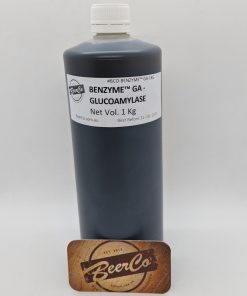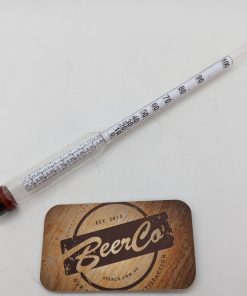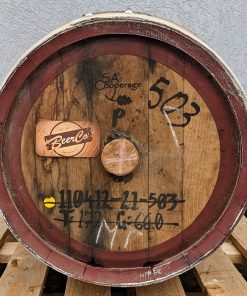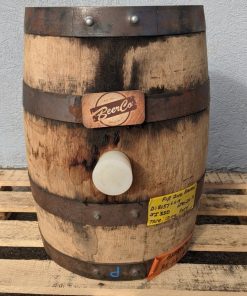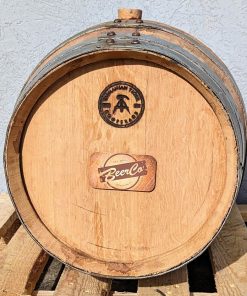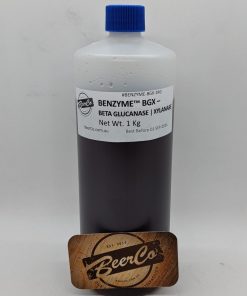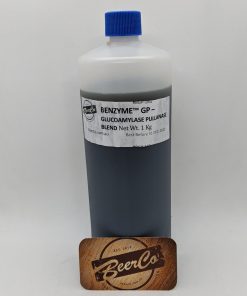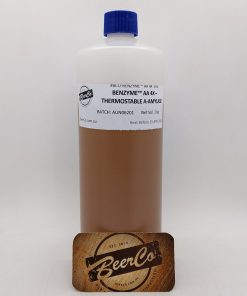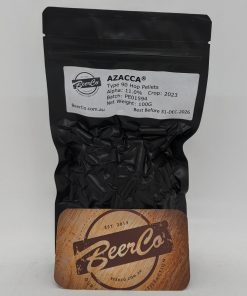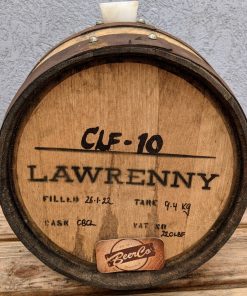Benzyme LG | Prolyl Oligopeptidase Liquid Enzymes novozymes
$ 121,95 $ 48,78
Benzyme LG | Prolyl Oligopeptidase Liquid Enzymes reduces the amount of haze-active proteins, increasing the colloidal stability of beer while leaving all other properties unchanged. Benzyme LG consists of a proline-specific endopeptidase that acts on proteins rich in proline residues, preventing the formation of the large haze-active structures. As a result you will see a a significant decrease of visible haze in beer. This highly specific enzyme activity enables the brewers to produce a clear and stable product throughout shelf life.
Pack Sizes:
- 1 Kg HDPE Bottle Benzyme LG | Prolyl Oligopeptidase Liquid Enzymes
- 5 Kg HDPE Bottle Benzyme LG | Prolyl Oligopeptidase (SAVE 20% OFF 1 Kg Price)
- 25 Kg Canister Novozymes | Lumista® Gold
Key Benefits:
Maintain colloidal stability throughout shelf-life
- Ensure consistent appearance and quality of your beer.
Increase of production capacity and flexibility
- Use Benzyme LG to optimize your tank utilization increasing capacity and flexibility.
Decrease of energy consumption
- Achieve beer stabilization in a shorter period of time by cutting out the deep cooling step.
Low cost-in-use
- Decrease cost-in-use in comparison to current enzymatic and adsorbent-based solutions.
Easy and safe to handle
- Improve safety by handling little volume per application and avoiding powder handling.
Gluten reduction
- Reduce gluten in beers based on barley and/or wheat malts (*country regulation dependent).
Reliable and sustainable solution with a stable supply
- Assure uninterrupted production, consistent product quality, and timely delivery.
PRODUCT CHARACTERISTICS/PROPERTIES
- Lumista® Gold – Product Data Sheet
- Lumista® Gold – Safety Data Sheet
- Lumista® Gold – Application Sheet
The sustainable way to make your beer shine
A clear beer throughout shelf life
The formation of molecular structures composed of proline-rich proteins and polyphenols is regarded as one of the major contributors of the haze formation in beer. With time, the size and stability of these protein-polyphenol complexes grow, resulting in increased beer turbidity. In a worst-case scenario, these particles become visible to the naked eye, diminishing the consumer appeal of the final product.
Benzyme LG comprises a proline-specific endopeptidase that targets haze-active proteins rich in proline residues. By preventing the formation of sizable haze-active structures, it notably reduces the visible haze in beer. This highly specific enzyme activity enables the brewers to produce a clear and stable product throughout shelf life.
Performance
What is haze in beer?
In beer, a variety of insoluble particles can be suspended in the liquid phase, which will scatter the light and make the beer appear turbid. Turbidity in beer can be directly measured with a turbidimeter equipped with detectors placed at a 25° and/or 90° light scattering angles, allowing the detection of very small particles (under 1 μm) with high sensitivity.
Chill and tannic acid-induced haze measurements are commonly used in breweries to assess the potential haze formation during shelf life. Chill haze analysis is a robust method which gives an indication of the maximum potential haze formation caused by the complexes that precipitate under cold conditions and/or by ethanol addition. Tannic acid-induced haze correlates with the level of haze-sensitive proteins present in the matrix.

How to decrease the haze formation in your beer?
Benzyme LG is the solution for haze prevention in your beer. This highly specific endopeptidase neither affects the fermentation performance nor the sensory profile or foam stability of your beer, keeping it clear (Fig. 1). The addition of Benzyme LG during fermentation decreases both chill and tannic acid-induced haze values considerably, as shown in Fig. 2.

Traditionally, beer stabilization requires a deep cooling step and is based on the binding and/or precipitation of proteins or polyphenols to avoid the formation of large protein-polyphenols in the finished beer. Applying synthetic adsorbents during maturation and/or filtration may bear the risk of carrying over traces to the finished beer. With an enzymatic solution, breweries can abandon or limit the usage of adsorbents. In addition, the maturation time can be shortened since the enzyme is active throughout the fermentation process.

The impact of Benzyme LG on beer stability is also evident when following real-time shelf life (Fig. 3). After storing beer samples for 12 months at room temperature, the turbidity and chill haze levels were significantly lower when Benzyme LG was added (green line, Fig. 3A and 3B). In addition, the foam stability remained unchanged and within standard values (≥ 220 seconds), demonstrating the high specificity of this endopeptidase.
Gluten Reduction
In barley and/or wheat-based beers and beverages
Most commercial beers and malt-based beverages are based on gluten-containing grains such as barley or wheat, preventing their consumption by people on a low or free gluten diet. Upon ingestion of foods or beverages based on barley or wheat, gluten degradation is minimal through the digestive system since the gluten matrix is very resistant to human gastrointestinal peptidases. A major reason for this resistance is the high level of proline in the composition of the gluten proteins. Applying the proline-specific endopeptidase Benzyme LG leads to a reduction of the gluten content in beer, by cleaving the proteins and peptides rich in proline which constitute a major part of the gluten matrix. When considering a standard pilsner beer based on 100% malt, Benzyme LG can reduce the gluten content up to 90%, reaching a level below 20 ppm (Fig. 4).

Fig. 4 – In beers based on gluten-rich cereals, Benzyme LG can decrease the gluten content by 90% (A). Breaking down the proline-rich gluten matrix enzymatically can lead to gluten levels below the 20 ppm threshold (B).
Applying the proline-specific endopeptidase Benzyme LG leads to a reduction of the gluten content in beer, by cleaving the proteins and peptides rich in proline which constitute a major part of the gluten matrix. When considering a standard pilsner beer based on 100% malt, Benzyme LG can reduce the gluten content up to 90%, reaching a level below 20 ppm (Fig. 4).
The gluten content in the finished product and remaining allergen potential depends on the raw materials and production process used and therefore, the finished product must be carefully assessed by the produced. The legislation on gluten reduction is highly specific per country or region. Please consult a Benzyme LG expert for advice before testing this solution for gluten reduction
Usage
Benzyme LG is dosed into the cold wort at the beginning of the fermentation process. The dosage may vary depending on the wort composition, original gravity and intended shelf life.
- The recommended dosage for preventing haze formation in a 100% barley malt beer with 12° Plato is 1.7 g/hL cold wort. In the cases where the main application is gluten reduction, higher dosages may be required: 2.0 – 4.0 g/hL cold wort
- The optimal dosage is reached when the finished beer remains clear during the intended shelf life
Benzyme LG interacts with its environment, so the results are not only pH- and temperature-dependent, but also linked to yeast strain, wort composition and original gravity. Thus, each application needs to be assessed and optimized individually.
More information can be found in the “Brewing Handbook”.
Product data
Benzyme LG
Declared enzyme: Prolyl oligopeptidase
Catalyzes the following reaction: Prolyl oligopeptidase hydrolyzes peptide bonds at the carboxyl site of mainly proline- and to a lesser extent alanine-residues
Declared activity 375 AU(P)/g
E.C/I.U.B. no.: 3.4.21.26
Physical form: Liquid
Production method: The enzyme product is manufactured via fermentation of a microorganism not present in the final product. The production organism is improved using modern biotechnology
Density 1.1 – 1.3 g/mL
Stability
Please see the Lumista® Gold – Product Data Sheet
Safety, handling and storage
Recommended storage: 0-10 °C (32-50 °F) Packaging must be kept intact, dry, and away from sunlight. Please follow the recommendations and use the product before the best-before date to avoid the need for a higher dosage.
Best before: You will find the best-before date in the certificate of analysis or on the product label. The product gives optimal performance when stored as recommended
and used prior to the best-before date.
This product contains enzymes. While enzymes are safe to use in consumer applications, they need correct handling in working environments to ensure workers’ safety.
Indeed, repeated inhalation of enzyme dust or aerosols resulting from improper handling may induce sensitization and may cause allergic type 1 reactions in sensitized individuals.
Please follow the precautionary handling recommendations below:
![]()
- Avoid breathing dust/fume/gas/mist/vapors/spray
- Avoid contact with eyes, skin, or clothing
- In case of inadequate ventilation wear respiratory protection
- IF INHALED: Remove person to fresh air and keep comfortable for breathing
- If experiencing respiratory symptoms: Call a POISON CENTER or a doctor
- Store in a dry place. Store in a closed container
- Dispose of contents/containers in accordance with local regulations
| Size | 1 Kg, 5 Kg |
|---|
Fast shipping and professional packing
We offer a wide range of shipping options due to our long-running partnerships with UPS, FedEx and DHL. Our warehouse staff are highly trained and will package your items according to our precise and precise specifications. Before shipping, all goods are thoroughly inspected and securely secured. Every day we ship hundreds of packages to our customers from all over the world. This is a sign of our commitment to be the largest online retailer worldwide. The warehouses are located situated in Europe as much as they are in USA.
Note: Orders containing multiple items will have a different processing period for each item.
Before shipping the items, our staff will carry out an extensive inspection of the products you have ordered. The majority of orders are delivered within 48 hrs. The delivery time should be between 3-7 working days.
Returns
We don't manage the stock in our factory and warehouse. Actual stock levels may fluctuate at any moment. Be aware that it's possible that your order will be out of stock after you have placed the order.
Our policy is for 30 days. Unfortunately, if 30 days have passed from the date you purchased the product, we are unable to offer you a return or exchange.
The item must not be used, and it must be in the original packaging. It must also be in the original packaging.
Related products
Brewing Aids
Equipment
Equipment
Brewing Aids
Brewing Aids
Brewing Aids
Equipment
